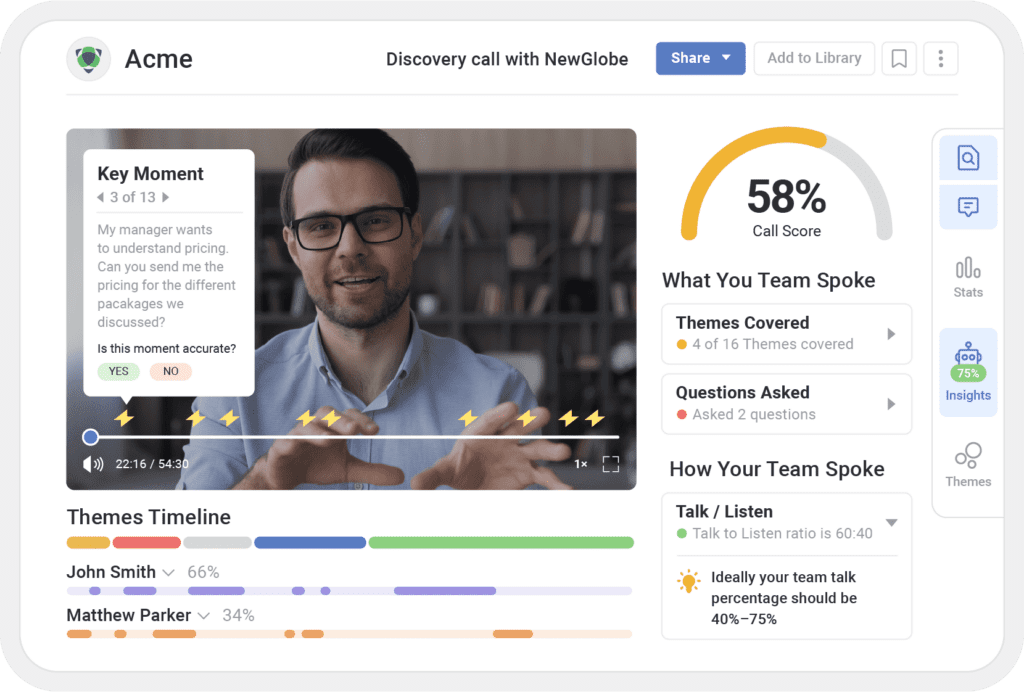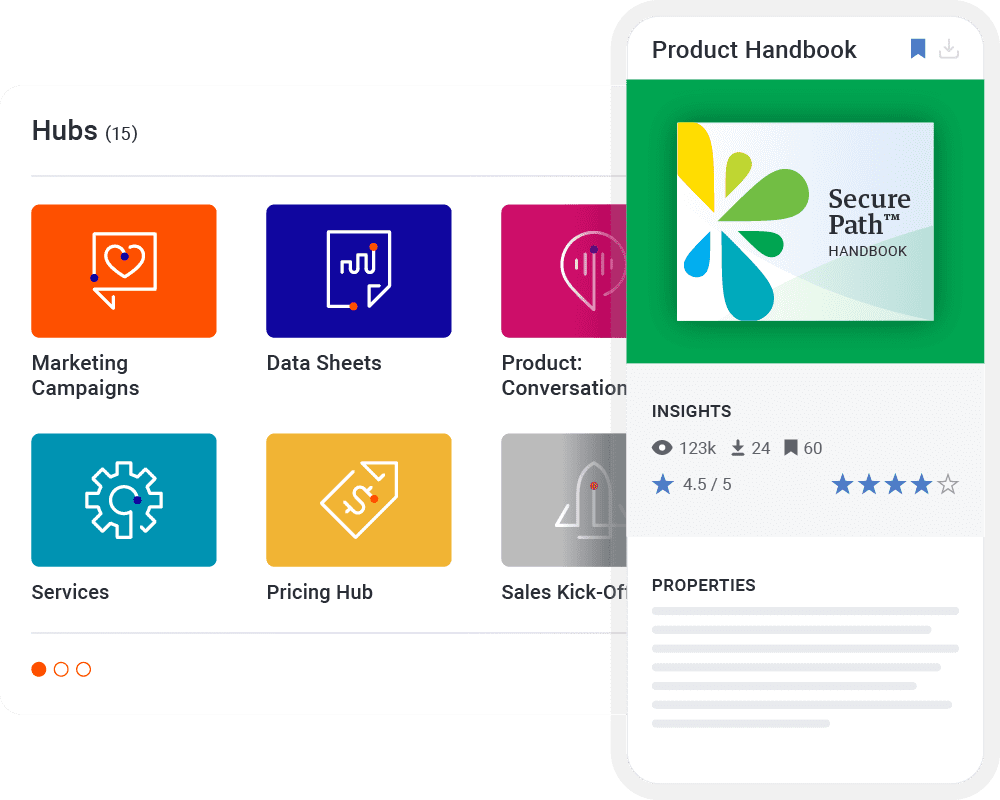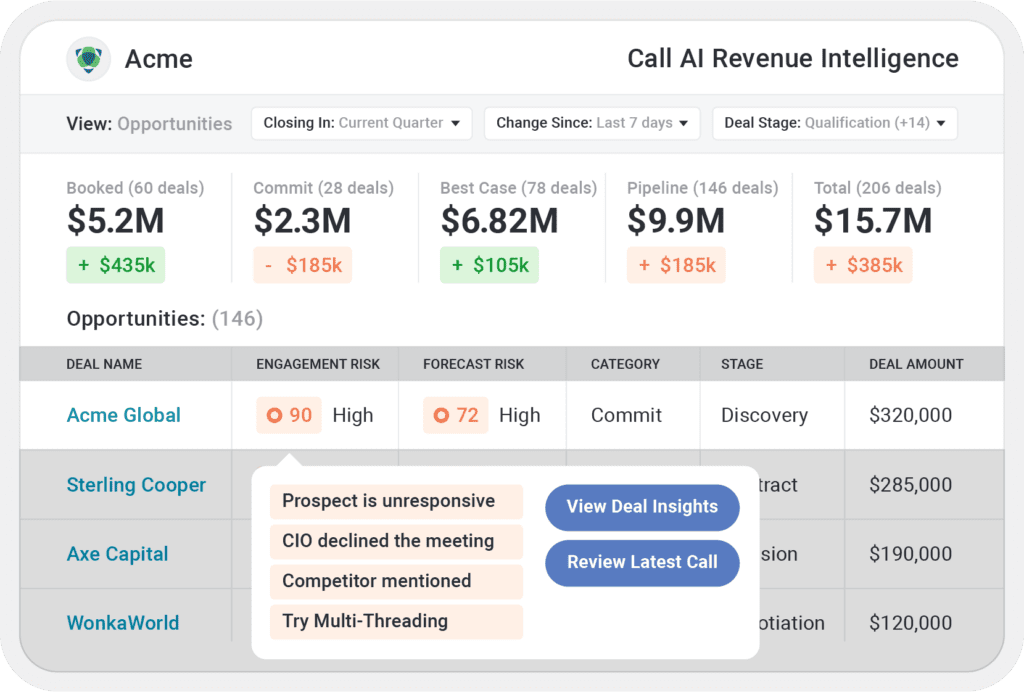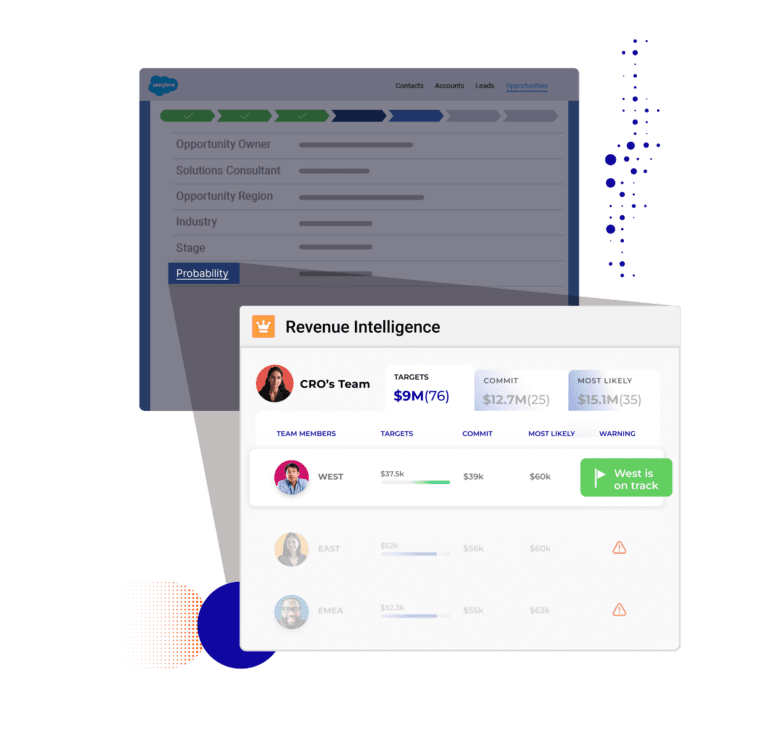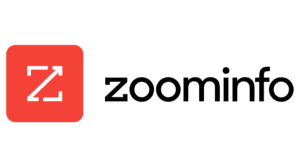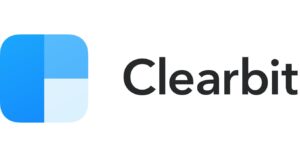The Complete Guide to Sales Enablement KPIs
![]() Kevin Atkinson
on
June 17, 2024
Kevin Atkinson
on
June 17, 2024
When sales enablement was in its infancy, organizations that adopted it often failed to measure its impact. A 2019 report found that a mere 25% of organizations measured sales enablement impact by using leading and lagging indicators.
In other words, organizations developed and delivered sales enablement initiatives – but dropped the ball on tracking sales enablement KPIs.
That approach won’t cut it anymore.
Modern revenue leaders know that tracking sales enablement KPIs is a must. They understand that regularly tracking goals is key to determining how well their programs are working and where there are opportunities to improve and increase impact.
When it comes to sales enablement KPIs, you may have questions like:
- What are they?
- Why is it important to track?
- Which do you need to measure?
We’ll answer all of these sales enablement KPI questions (and more) in this guide.
What are sales enablement KPIs?
Key performance indicators—or KPIs for short—are metrics used to measure performance. Tracking KPIs helps businesses understand whether they’re on track to meet their goals.
Sales enablement KPIs are key performance indicators that gauge sales productivity and help revenue teams understand how (and whether) sales enablement programs and initiatives are helping them meet their sales enablement goals.
By leveraging sales enablement analytics software, revenue teams can determine how well their enablement programs empower sales reps to effectively and efficiently engage with buyers and close more deals.
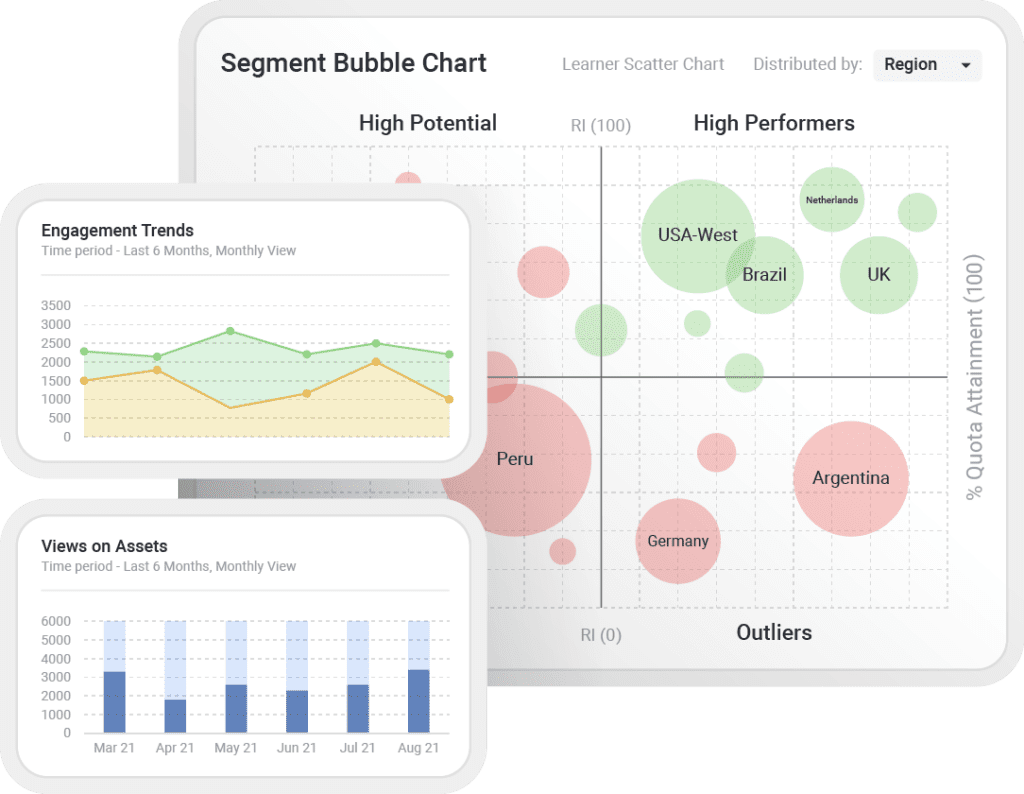
Why are sales enablement KPIs important?
Tracking KPIs is a crucial component of any business strategy. Sales enablement is no exception.
If you don’t track sales enablement metrics, it’s impossible to determine how (or whether) your sales enablement efforts are improving business outcomes and delivering ROI for your organization.
In the best of times, businesses aim to invest in programs and initiatives with the biggest impact. This is especially true in today’s uncertain economy when many organizations face flat (or even reduced) budgets.
Tracking sales enablement KPIs is key to demonstrating the value sales enablement delivers to the business. When you can prove impact, it’s much easier to maintain the budget and resources you have and potentially secure additional budget and resources.
Monitoring KPIs also helps you understand where there are opportunities for improvement. Then, you can make data-driven optimizations to improve your sales enablement programs’ effectiveness and sales rep performance.
Why you need to track sales enablement KPIs
Tracking sales enablement KPIs is a critical step in any sales enablement program, and it’s well worth the effort. Organizations that regularly track KPIs experience some significant benefits. Let’s look at what regular tracking can do for your business.
Improve cross-functional alignment
Modern B2B customers expect excellent, seamless experiences across the purchase journey. Multiple teams, including sales, marketing, and customer success, play a role in delivering these experiences.
Often, these teams work in silos. This results in disjointed buying and selling journeys.
For example, a marketing team may build new campaigns that increase leads. While their campaigns generate a high volume of leads, the leads aren’t high quality. Therefore, sales reps waste their time on leads that’ll never convert.
Establishing sales enablement KPIs is key to ensuring all teams understand sales enablement goals and their role in achieving those goals. When teams are aligned, outcomes improve.
Properly allocate enablement resources
If you’re not tracking sales enablement KPIs, it’s impossible to know what kinds of sales enablement programs and initiatives you need to build. As such, you may scramble to build many different programs and initiatives and hope that something works.
You can identify the most effective ways to support your revenue teams when tracking the right metrics. Then, you can allocate your enablement resources appropriately.
Optimize your sales enablement strategy
Regularly tracking sales enablement KPIs helps you understand if you’re on track to meet your sales enablement objectives. It can also help you identify where there are areas for improvement. Then, you can make data-based optimizations to your sales enablement strategy and programs to improve ROI.
Deliver data-driven training and coaching
Each sales rep has unique strengths and weaknesses. Delivering generic sales enablement to every member of the team isn’t an effective approach.
But this one-size-fits-all approach is more common than we’d like to think. A recent report found that only 40% of C-level executives can identify sales rep strengths and weaknesses for customized training.
Monitoring sales enablement KPIs provides insight on overall sales performance as well as the performance of specific teams. You can also drill down further to understand the strengths and weaknesses of each sales rep. Armed with these insights, sales enablement teams can deliver targeted training and coaching that address the needs of each seller. That way, every sales team member will have what they need to be effective and efficient in their roles, and they won’t waste their time on irrelevant training and coaching.
Increase the effectiveness of sales content
The right sales content is key to closing deals, but certain types of content are more effective than others.
When you regularly track sales enablement KPIs, you can understand how sales reps and prospects use sales content and how it’s influencing sales outcomes. You can use those insights to optimize your content strategy properly. For example, you can invest more in the types of content tied to closed won deals, and you can eliminate unused assets on the shelf.
Then, you can use a sales content management solution to help sales reps find the right content for any sales scenario.
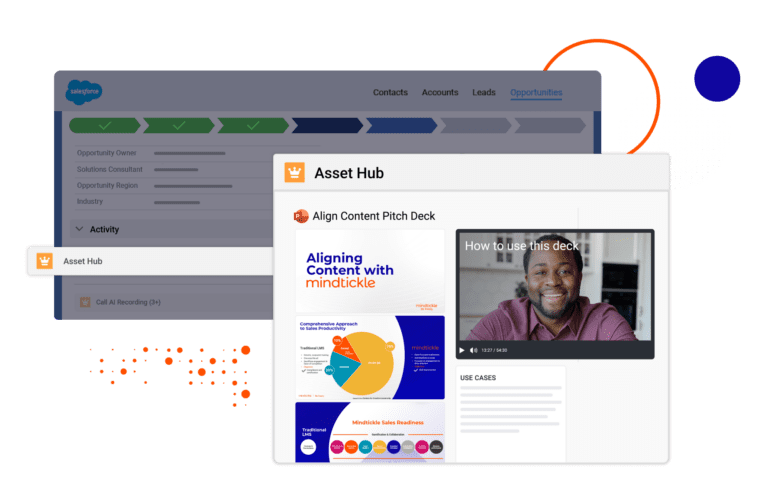
Optimize the sales cycle
The shorter the sales cycle, the faster your business can make money. Monitoring sales enablement metrics provides insight into where sellers are having problems. Revenue teams can then work to provide the tools, training, and resources to help sales reps overcome their challenges.
What sales enablement KPIs do you need to measure?
Now that we’ve explained sales enablement KPIs and why it’s important to monitor them, you may be wondering which specific metrics you need to track.
There is no one-size-fits-all answer. Instead, it’s important to determine which sales enablement KPIs are appropriate for your organization.
However, some common examples of sales enablement KPIs include:
Sales enablement aims to improve sales reps’ productivity. As such, measuring sales enablement metrics that shed light on seller productivity is key. A number of different metrics provide insight into sales productivity. One such metric is the time a rep spends on each deal.
You can determine the average time your top reps spend on deals and use this as a benchmark. Then, you can measure all reps against this gold standard to identify areas for improvement.
This measures how long it takes to guide buyers through the entire sales cycle. It includes every step—from initial contact to signing the deal. This sales enablement KPI provides insight into how effectively your sellers guide buyers through the sales cycle.
In addition to measuring the length of the entire sales cycle, you can also measure the length of each step of the sales cycle. This can provide insight into which stages of the sales cycle reps may be struggling with.
This is a calculation of how much it costs to acquire a customer. It’s calculated by dividing sales and marketing expenses by the number of new customers you’ve acquired over a set period.
The lower the CAC, the more money you’re making.
This sales metric measures the percentage of leads that become customers. It provides insight into whether sales reps have what it takes to close deals.
In addition to measuring the overall conversion rate, you may also want to track the portion of prospects who convert at each stage of the sales cycle. If you see a big drop-off at a certain point in the sales cycle, you may be able to deliver additional training and coaching.
This is the percentage of opportunities won by the sales team. Win rate is another sales metric that provides insight into your reps’ ability to close deals.
It makes sense to measure average win rates. Breaking it down by factors like industry and company size can provide even richer insights. For example, you may find that your win rate in the medical device industry is significantly lower than all other industries. Here, there’s an opportunity to develop targeted resources for sales reps working with medical device industry prospects.
Your churn rate is the portion of customers who stop doing business with you during a specified period. There are a number of reasons why customers churn. One may be that the product wasn’t the right fit for the buyer. If this is the case, there may be an opportunity to develop additional training and enablement to improve reps’ qualification skills.
B2B customers have high expectations. They expect outstanding experiences throughout their entire relationship with your organization and won’t hesitate to switch to another company if their expectations aren’t met.
It’s essential to track customer satisfaction and the percentage of customers who stick around long-term. Then, you can discover opportunities to better enable your customer-facing teams to deliver outstanding experiences.
This sales enablement KPI is closely related to customer satisfaction and retention. It’s the total value of a customer for the entire period they do business with you.
A low customer lifetime value may indicate problems with customer satisfaction. This is an opportunity to empower your entire revenue team with the right tools and resources to deliver satisfying customer experiences.
Chances are, sales content is part of your sales enablement strategy. It’s essential to track how (and whether) sales content is being used by sales reps and customers – and how it’s impacting deals.
These sales enablement KPIs provide insight that can help you optimize your sales content and deliver training so your sales reps know how to use it.
For example, when you start tracking sales content consumption and effectiveness, you may notice a certain content that’s not used often. But when used, it has a large, positive impact on deal outcomes. This is an opportunity to provide additional enablement to ensure sales reps know where to find this asset and how to use it in deals.
These sales enablement KPIs allow you to understand how sales reps engage with the training and enablement you deliver. For example, you can track what percentage of your sales reps have completed a specific training or the average score for an assessment at the end of a training module.
Sales coaching is an important component of a sales enablement program. It’s important to track sales enablement KPIs related to coaching, like how many coaching sessions sales reps are receiving and how many of those sessions are deal coaching versus skills coaching.
Of course, simply “checking the box” when delivering sales coaching isn’t enough. You must also track how these coaching sessions improve reps’ behaviors and sales performance.
Do you have the right tools to track your sales enablement KPIs?
When done well, sales enablement can significantly impact sales rep performance. It’s no wonder many organizations are investing in sales enablement tools, strategies, and teams.
The right sales enablement analytics are key to any sales enablement strategy. Without measuring sales enablement metrics, it’s impossible to know how you’re progressing toward your sales enablement goals and where there are opportunities for improvement.
Measuring a whole host of sales enablement KPIs can seem daunting. This is especially true if you use different solutions to power different components of your sales enablement program. For example, if you use different tools for training, ongoing learning, coaching, and sales content management, it can be challenging to cobble together metrics in a way that makes sense.
There’s a better way.
An integrated revenue enablement platform like Mindtickle incorporates all of the key elements of sales enablement – including sales training, enablement, sales content, and call insights – all in one platform. Mindtickle also features robust sales enablement analytics that provide a holistic look at the impact of your programs. When you’ve unlocked these insights, you can make data-based optimizations that’ll improve the effectiveness of your sales enablement programs and drive sales success.
Sales Enablement with Mindtickle
Ready to see why winning revenue teams are partnering with Mindtickle?
Request Your Demo



